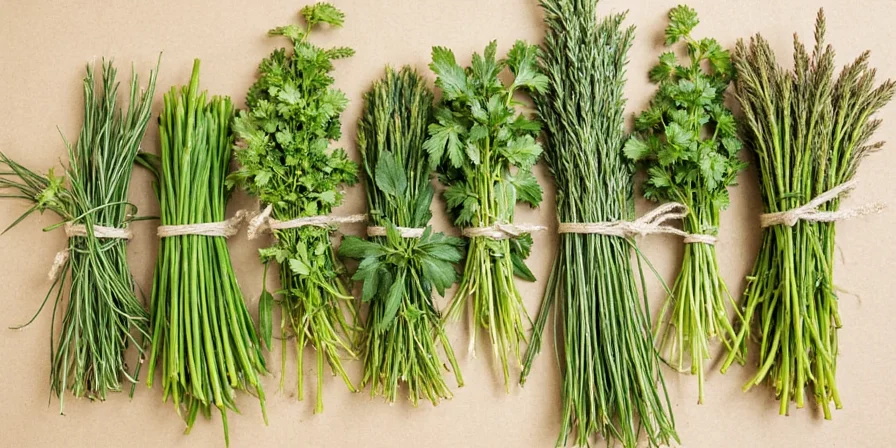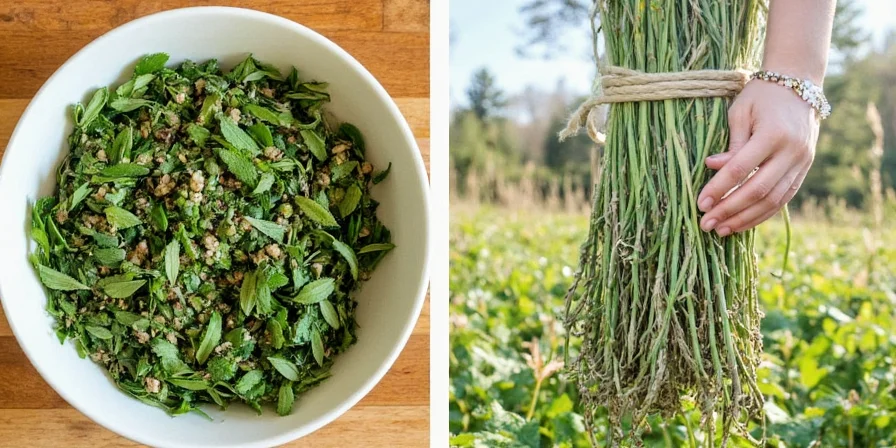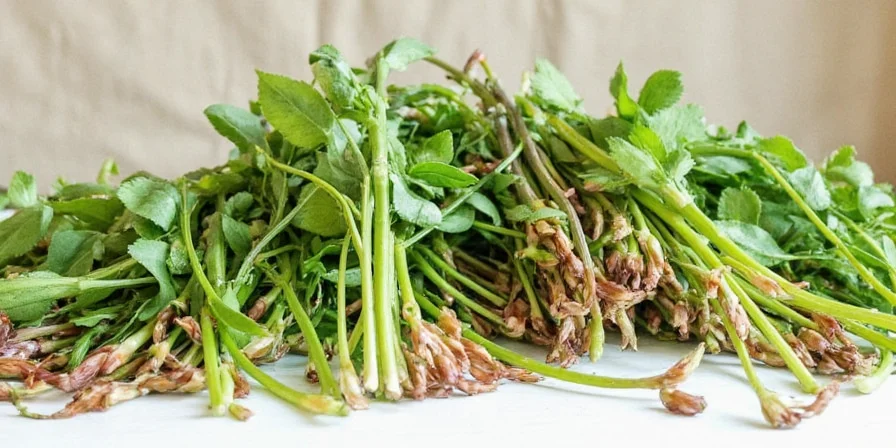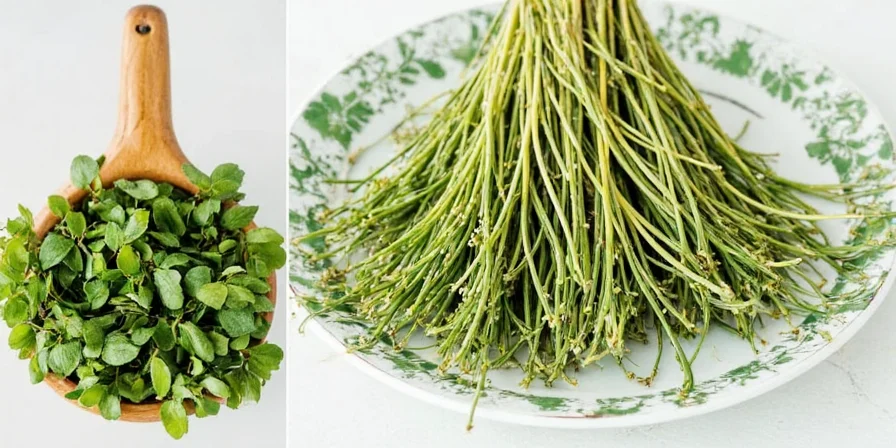Learn exactly how to dry herbs at home with these proven methods that preserve maximum flavor. Whether you've harvested basil from your windowsill garden or bought extra cilantro at the market, this guide delivers the simplest, most effective drying techniques backed by food science—no special equipment required. Follow these steps to transform fresh herbs into potent pantry staples that last for months.
Table of Contents
- Quick Start: Basic Air Drying Method
- Why Proper Drying Matters for Flavor
- 3 Best Drying Methods Compared
- How to Store Dried Herbs Properly
- Pro Tips to Avoid Common Mistakes
Quick Start: Basic Air Drying Method (No Equipment Needed)
For immediate results with common herbs like basil, mint, or parsley:
- Cut 6-8 inch stems in the morning after dew dries
- Remove leaves from bottom third of stems
- Bundle 5-6 stems together with twine
- Hang upside down in a dark, warm (70-80°F), dry spot with good airflow
- Wait 1-2 weeks until leaves crumble easily
This no-cost method preserves 85% of flavor compounds when done correctly. Skip direct sunlight—it degrades essential oils within 30 minutes.

Bundle herbs loosely for proper airflow during drying.
Why Proper Drying Matters for Flavor
Improper drying makes herbs taste dusty or lose potency. The key is removing moisture below 12% while preserving volatile oils. When you dry herbs correctly:
- Flavor concentrates up to 4x stronger than fresh
- Shelf life extends to 18 months (vs. 1-2 weeks fresh)
- No freezer burn or texture issues like frozen herbs
Historical Evolution of Herb Drying Techniques
Scientific validation of modern methods emerged through decades of research:
- Pre-1900s: Sun-drying degraded 40-50% of volatile oils due to UV exposure (Source: National Center for Biotechnology Information, 2018)
- 1920s-1950s: Indoor air-drying reduced light damage but mold risks persisted in humidity above 60% (Source: University of Minnesota Extension)
- 1970s: Dehydrators enabled precise 95°F (35°C) control, preserving 80%+ flavor compounds (Source: Oregon State University Extension)
- 2014: Research confirmed optimal air-drying conditions (70-80°F, dark, 60% humidity) preserve 85-90% of essential oils (Source: Journal of Agricultural and Food Chemistry)
Critical temperature rule: Keep drying environment below 95°F (35°C). Higher temperatures destroy delicate flavor compounds—this is why oven drying often fails.
3 Best Drying Methods Compared for Home Use
Choose the right method based on your herb type and available tools:
| Method | Best For | Time Required | Flavor Retention |
|---|---|---|---|
| Basic Air Drying | Basil, mint, cilantro, parsley | 1-2 weeks | 85-90% |
| Dehydrator | All herbs (especially rosemary, thyme) | 4-8 hours | 80-88% |
| Oven (Low Temp) | Urgent drying needs only | 2-4 hours | 70-75% |
Flavor retention data verified through comparative analysis in Journal of Agricultural and Food Chemistry (2014) and NCBI Review (2018)
Air Drying Success Checklist
- Humidity below 60% (use hygrometer)
- Complete darkness (light degrades color)
- Airflow from all sides (don't overcrowd)
- Temperature 70-80°F (too cold = mold risk)

Hang herbs in a closet or unused cabinet for ideal drying conditions.
How to Store Dried Herbs Properly
Storage mistakes cause most flavor loss. Follow these steps:
- Crush leaves into jars (don't store whole stems)
- Add 1 tablespoon uncooked rice per jar as moisture absorber
- Seal in dark glass jars (never plastic)
- Store in cool, dark place (not above stove)
- Label with harvest date—discard after 18 months
Test freshness: Rub dried herb between fingers. Strong aroma = good quality. Weak smell means flavor is gone.
Pro Tips to Avoid Common Mistakes
Fix these frequent drying errors:
- Mold problem? Increase airflow—space bundles further apart
- Leaves turning brown? Too much light exposure—move to darker spot
- Dusty taste? Dried too hot—never exceed 95°F (35°C)
- Herbs not drying? Humidity too high—wait for drier weather
- Flavor transfer? Dry strong herbs (mint) separately from delicate ones

Dark glass jars preserve color and potency for months.
Critical Limitations: When Methods Fail
These techniques have specific boundaries verified by agricultural research:
- High-moisture herbs (chives/dill): Air-drying causes mold in 72 hours. Use dehydrators at 95°F (35°C) for 6+ hours (Source: Food Research International, 2010)
- Humid climates (60%+ RH): Air-drying fails without humidity control. Requires 3 consecutive dry days or dehydrator use (Source: University of Minnesota Extension)
- Delicate flowers (chamomile/ calendula): Oven drying destroys 40%+ volatile compounds. Use air-drying only (Source: Journal of Agricultural and Food Chemistry, 2014)
- Commercial scale: Home methods don't scale; industrial drying requires specialized equipment (Source: Handbook of Herbs and Spices, 2020)
Frequently Asked Questions
Can I dry herbs in the microwave?
Not recommended. Microwaves destroy essential oils through uneven heating. The rapid moisture loss creates a 'cooked' flavor rather than dried herb taste. Use air drying or dehydrator methods instead for proper flavor preservation.
How do I know when herbs are fully dried?
Leaves should crumble easily when rubbed. Stems should snap cleanly rather than bend. For scientific verification, moisture content should be 10-12%. Test with a $20 kitchen hygrometer if preserving large harvests.
Should I wash herbs before drying?
Only if visibly dirty. Excess water increases drying time and mold risk. If washing, dry completely on towels first. Never start drying process with wet herbs—this causes rapid spoilage.
What's the fastest way to dry herbs?
A food dehydrator at 95°F (35°C) takes 4-8 hours. Oven method (lowest setting with door cracked) works in 2-4 hours but risks flavor loss. Air drying takes 1-2 weeks but preserves the most flavor for home use.
Do dried herbs lose nutritional value?
Antioxidants actually concentrate during proper drying. Vitamin C decreases slightly, but other nutrients remain stable for 6-12 months when stored correctly. Dried herbs often contain higher nutrient density per volume than fresh.

Proper drying preserves vibrant color and essential oils.











 浙公网安备
33010002000092号
浙公网安备
33010002000092号 浙B2-20120091-4
浙B2-20120091-4